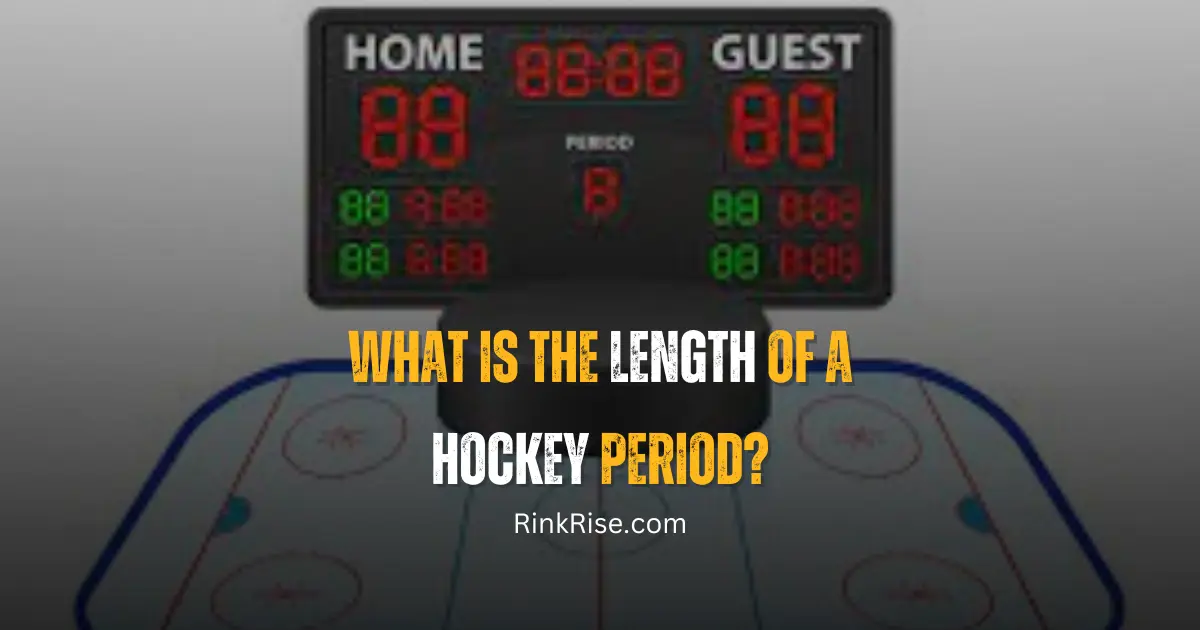Understanding Hockey Periods
Hockey is divided into three segments called periods, each pivotal to the game’s pace and strategy. Generally, each period in professional hockey lasts 20 minutes. This standard timing plays a significant role in shaping the game’s fast-paced and strategic essence. Comprehending the duration of these periods is essential for appreciating the game’s temporal dynamics.
Exploring Ice Hockey Fundamentals
Game Format
Ice hockey consists of three periods, each lasting 20 minutes, differing from other sports that use halves or quarters. Players and teams get a break between these periods, usually 15 to 18 minutes, providing time to rest and plan strategies.
If the game is tied, overtime is added, often as a sudden-death format where the first team to score claims victory. The rules for overtime can vary by league and competition.
Key Components Influencing the Game
Several factors contribute to the game’s dynamics, including:
- Faceoffs: Play restarts with a referee dropping the puck between two players from opposing teams.
- Powerplays: This advantage occurs when one team has more players on the field due to penalties given to the other team.
- Penalties: Players may be temporarily removed from the game for rule violations.
Comparing Ice Hockey with Other Team Sports
Ice hockey stands out in various ways:
- Playing Surface: It’s played on ice, categorizing it as a winter sport and demanding skills like skating and puck management.
- Equipment: Players use specialized gear including skates, helmets, and protective padding.
- Penalties: Ice hockey penalties cover a range from minor (e.g., tripping) to major (e.g., fighting).
- Game Duration: The unique three-period structure sets it apart from sports like basketball and soccer, which use different time divisions.
Influences on Hockey periods
- Consistent Time Frames: Typically, professional hockey leagues follow a fixed duration for each period.
- Rules and Standards: Official organizations establish regulations to maintain consistency in game durations across various competitions.
- Disruptions: Gameplay can be paused due to penalties, stoppages, and other interruptions.
- Extended Play: Tied games may result in additional overtime periods, which have their own set of time rules.
- Gameplay Strategy: The duration of periods affects how teams plan and execute their strategies, adding to the excitement of the game.
Read more: Numbers of Periods and Quarters in Hockey
Game Structure and Timing
Duration of NHL hockey Periods
Each period in an NHL game is officially set at 20 minutes. However, the real-time duration tends to extend between 35 to 45 minutes due to various stoppages.These interruptions include penalties, goals, and TV timeouts. Consequently, while the game clock indicates only 20 minutes, the time actually spent on gameplay is significantly longer.
Length of Game Segments and Breaks
A typical hockey game consists of three periods. Each period runs for 20 minutes. Between these segments, players rest and the ice is resurfaced during 15 to 18-minute intermissions. The game clock halts for various stoppages, like when the puck is out of play, making the total game time approximately 2.5 hours.
Interruptions and Breaks in Hockey
Hockey games have several interruptions. Reasons for these interruptions, or stoppages, include:
- Icing
- Offside
- Puck out of play
- Penalties
- Injuries
Besides these stoppages, each team is allowed to take one 30-second break or timeout during the game. Teams use timeouts to rest briefly, plan strategies, or go over important plays.

Advertising Intervals in NHL Games
A key element that increases the duration of an NHL game is the time allotted for advertising breaks. The NHL schedules these breaks during pauses in the game, like after scoring goals, during penalties, and at period endings. These advertising periods can extend the game by nearly 18 minutes, which is comparable to the length of an entire game period.
Sudden Death in Playoff Extensions
During the playoffs, if teams are tied when regular play ends, they enter a sudden death overtime period. This period extends until one team scores a goal, which can lead to extended games. For example, some playoff games have reached double, triple, or even quadruple overtime durations. The record for the longest NHL playoff game occurred in 1936, where the Detroit Red Wings and Montreal Maroons played 176 minutes and 30 seconds past regulation before a winner was declared.

Overview of Hockey’s Period Structure
To put it simply, hockey is divided into three 20-minute periods which form the foundation of the game’s timing. This arrangement is not only traditional but also strategic, allowing for breaks and player changes that keep the sport lively and engaging. In professional hockey, like the NHL, this setup helps regulate the flow and duration of the game, taking into account stoppages and potential overtime.
The stop-time feature, where the clock stops during interruptions, ensures that the game time is measured accurately, contributing to the overall excitement and strategy of hockey. This consistent structure supports a dynamic and thrilling game atmosphere for both the players and the audience.
FAQ’s: hockey periods
Does a hockey game consist of three or four periods?
Hockey games are generally divided into three periods.
How long does a hockey period last?
A hockey period typically spans 20 minutes.
Why are hockey games divided into three periods?
Hockey games are split into three periods to provide strategic breaks, allow players to rest, and keep the game fast-paced. This format improves the experience for both players and spectators.
What does stop time mean in hockey?
Stop time in hockey is when the clock is paused during disruptions like penalties or injuries. This helps keep the actual play time accurate.
Why does hockey have three periods instead of four?
Hockey is played in three periods rather than four to maintain a traditional and balanced approach. This setup allows for strategic adjustments, player rotations, and helps keep the game exciting from start to finish.
Does the NHL have four periods in a game?
No, the NHL uses a standard format with three periods in a hockey game.



